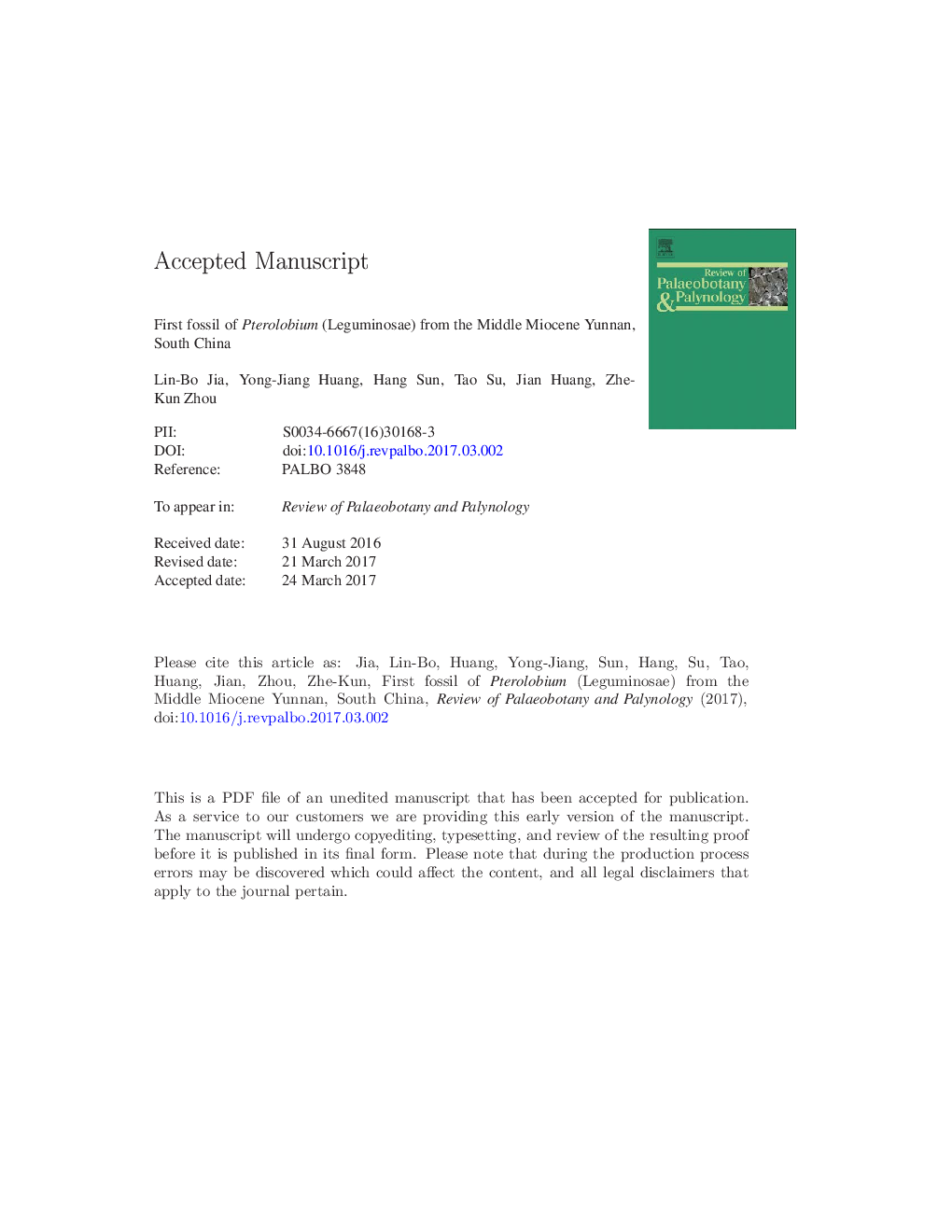| Article ID | Journal | Published Year | Pages | File Type |
|---|---|---|---|---|
| 5788341 | Review of Palaeobotany and Palynology | 2017 | 39 Pages |
Abstract
Here we describe the first fossil species of Pterolobium (Leguminosae), Pterolobium punctatopsis sp. nov., based on two compressed fruits from the Middle Miocene (16.5-15.2Â Ma) Maguan Basin, southeastern Yunnan, South China. The fruits are asymmetrically winged, consisting of an elliptical fruit body and a laterally extended membranous wing. Extensive comparisons with both extant and extinct genera that produce asymmetric winged fruits indicate that our fossil fruits can be unequivocally referred to Pterolobium. This fossil finding adds a new member into the fossil Leguminosae, enriching our knowledge of the past diversity of the large family. It implies that the genus already existed in South China, where it currently grows, at least by the Middle Miocene. As modern species of Pterolobium live in warm regions, the discovery of P. punctatopsis indicates a warm climate in Maguan region during the Middle Miocene. In contrast to the scarce fossil occurrence of Pterolobium, its sister group, Mezoneuron, has a relatively good fossil record that traces back to the Eocene.
Related Topics
Physical Sciences and Engineering
Earth and Planetary Sciences
Palaeontology
Authors
Lin-Bo Jia, Yong-Jiang Huang, Hang Sun, Tao Su, Jian Huang, Zhe-Kun Zhou,
